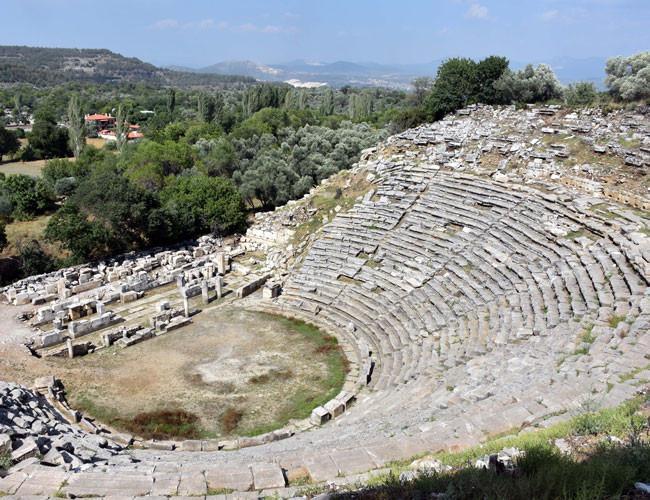
The largest marble city in the world, located in Turkey’s western Muğla province, continues to attract local and international tourists with its 3,000-year-old historical remains.
Home to many historical civilizations, Stratonikeia is influenced by the Hellenistic, Roman, Byzantium and Anatolian periods, while its importance continued during the Ottoman and Republican eras.
In 2015, it became famous as the “city of gladiators.” It is also included in the UNESCO World Heritage Temporary List.
As more details are unearthed during excavations, it is expected that the site will make it to the permanent UNESCO World Heritage List.
Speaking to state-run Anadolu Agency, Professor Bilal Söğüt, head of the Stratonikeia excavations, said he took over the scientific excavations and restoration work in 2008.
The excavation first began in 1977 under the direction of Professor Yusuf Boysal.
Söğüt said Stratonikeia is one of the important cities in the Karia region, which hosted the native people of Anatolia.
“Stratonikeia is a living example of an archeological city. There is no other example. There is no other city preserved as a whole,” he said.
Söğüt said that Greek, Latin and Ottoman inscriptions can be found altogether on one artifact, adding that this describes the cultural richness of the ancient city.
“The ancient city of Stratonikeia is a special area where gladiators were raised in and where great love once lived,” he added.
Stratonikeia is located within the borders of the village of Eskihisar, seven kilometers west of the district of Yatağan in the province of Muğla. It lies on Kadıkule Hill in the west of the fertile Yatağan Plain at the crossroads of main routes that connect western, central and southern Anatolia with each other.
The city continuously developed during the Classic, Hellenistic and Roman Imperial periods and gradually became a center of trade, art and culture. Today it is a significant and unique example as a settlement that keeps the characteristics of culture of different civilizations, succeeds to preserve its main structure and shows an entirety.